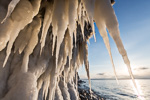-
current
recommendations- Liefdefjord
New page dedicated to one of Spitsbergen's most beautiful fjords. Background information and many photos.
- New Spitsbergen guidebook
The new edition of my Spitsbergen guidebook is out and available now!
- Liefdefjord
New page dedicated to one of Spitsbergen's most beautiful fjords. Background information and many photos.
Page Structure
-
Spitsbergen-News
- Select Month
- May 2025
- April 2025
- March 2025
- February 2025
- January 2025
- December 2024
- November 2024
- October 2024
- September 2024
- August 2024
- July 2024
- June 2024
- May 2024
- April 2024
- March 2024
- February 2024
- January 2024
- December 2023
- November 2023
- October 2023
- September 2023
- August 2023
- July 2023
- June 2023
- May 2023
- April 2023
- March 2023
- February 2023
- January 2023
- December 2022
- November 2022
- October 2022
- September 2022
- August 2022
- July 2022
- June 2022
- May 2022
- April 2022
- March 2022
- February 2022
- January 2022
- December 2021
- November 2021
- October 2021
- September 2021
- August 2021
- July 2021
- June 2021
- May 2021
- April 2021
- March 2021
- February 2021
- January 2021
- December 2020
- November 2020
- October 2020
- September 2020
- August 2020
- July 2020
- June 2020
- May 2020
- April 2020
- March 2020
- February 2020
- January 2020
- December 2019
- November 2019
- October 2019
- September 2019
- August 2019
- July 2019
- June 2019
- May 2019
- April 2019
- March 2019
- February 2019
- January 2019
- December 2018
- November 2018
- October 2018
- September 2018
- August 2018
- July 2018
- June 2018
- May 2018
- April 2018
- March 2018
- February 2018
- January 2018
- December 2017
- November 2017
- October 2017
- September 2017
- August 2017
- July 2017
- June 2017
- May 2017
- April 2017
- March 2017
- February 2017
- January 2017
- December 2016
- November 2016
- October 2016
- September 2016
- August 2016
- July 2016
- June 2016
- May 2016
- April 2016
- March 2016
- February 2016
- January 2016
- December 2015
- November 2015
- October 2015
- September 2015
- August 2015
- July 2015
- June 2015
- May 2015
- April 2015
- March 2015
- February 2015
- January 2015
- December 2014
- November 2014
- October 2014
- September 2014
- August 2014
- July 2014
- June 2014
- May 2014
- April 2014
- March 2014
- February 2014
- January 2014
- December 2013
- November 2013
- October 2013
- September 2013
- August 2013
- July 2013
- June 2013
- May 2013
- April 2013
- March 2013
- February 2013
- January 2013
- December 2012
- November 2012
- October 2012
- September 2012
- August 2012
- July 2012
- June 2012
- May 2012
- April 2012
- March 2012
- February 2012
- January 2012
- December 2011
- November 2011
- October 2011
- September 2011
- August 2011
- May 2011
- April 2011
- March 2011
- February 2011
- January 2011
- December 2010
- November 2010
- September 2010
- August 2010
- July 2010
- June 2010
- May 2010
- April 2010
- March 2010
- February 2010
- November 2009
- October 2009
- August 2009
- July 2009
- June 2009
- May 2009
- April 2009
- March 2009
- February 2009
- January 2009
- December 2008
- November 2008
- October 2008
- August 2008
- July 2008
- June 2008
- May 2008
- April 2008
- March 2008
- February 2008
- April 2000
- Select Month
-
weather information
-
Newsletter

| Guidebook: Spitsbergen-Svalbard |
Home → April, 2015
Monthly Archives: April 2015 − News & Stories
Easter weekend in Bjørndalen
Sun
5 Apr
2015
(4th/5th April 2015) After some calm early April days, it is time to get out again when the Easter weekend is approaching. Everybody here who has some means of transportation and possibly even access to one of the nowadays much sought-after huts is absconding from zivilisation, and I am happy to be part of that. It does not have to be far and adventurous. That is one of Longyearbyen’s nice aspects: the arctic wilderness starts as soon as you have passed the last house.
For many here, Bjørndalen is something like a city park in a wider sense. It is easy to get there by car or snow mobile, and there is a number of huts in local ownership near the Isfjord coast. This is where I spend this lovely weekend. All inclusive! Scenic views of the wide Isfjord, good food in good company, and small things are searched for by those who still believe in the Easter bunny, hidden by those who know better. At least in this case.
- gallery anchor link: #gallery_642
Click on thumbnail to open an enlarged version of the specific photo.
There is no Easter bunny in Bjørndalen, but Arctic fox and ptarmigan are at home there. I will have to spend some more time here, soon.
Permaculture: vegetables, fresh and tasty from the arctic
Modern life in the arctic is demanding considerable resources. Food stuffs are imported over long distances, which is costly and burns a lot of fuel. Many visitors get a bit nervous when they see the prices for food in the high north, and so-called fresh vegetables are not always as fresh as you might want.
Food waste is shredded and washed straight into the fjord together with waste water, altogether a great waste. Another solution would be highly desirable, both from an environmental and an economic perspective.
Thinking local food in the arctic, most people would probably have reindeer steaks on their mind, which is obviously not the solution. Local vegetables? Negative. Even the Russian (Sovjet, back then) settlements Barentsburg and Pyramiden were, in a way, more advanced, with considerable local production in greenhouses and stables for cows, pigs etc., most of which have been abandoned years ago.
But creative people are working on solutions to grow vegetables locally, fresh and environmentally friendly. A start up project called Polar Permaculture Solutions is developing techniques in Longyearbyen for advanced greenhouses to grow vegetables in permafrost areas without high energy and water consumption. First tests are promising: according to Polar Permafrost Solutions, parsley, coriander, basil, paprika, summer squash, mini corn, onions, lettuce, tomatoes, eggplant, red chili peppers and more have already been grown successfully. Food waste is used to produce soil and fertilizer with biological techniques (sounds better than worms, but that’s what it is)
Fresh, tasty, local production and environmentally friendly – we are looking forward to see the further development!
Fresh vegetables of local production in Longyearbyen: so far an utopia, hopefully soon a reality that makes a lot of sense for the environment and economy.
Source: Polar Permaculture
Lower extent of winter sea ice in the Arctic
During this winter season 2014/2015 the sea ice in the Arctic has extended much less than it usually did.
As the U.S. National Snow and Ice Data Center at the University of Colorado reports, this winter the ice likely reached its maximum extend as soon as February 25th. This is 15 days earlier than the average of the years 1981 to 2010 which serves as the reference period.
More alarming is the fact that the extent of sea ice on this date had not proceeded very far yet. Indeed, since the beginning of the satellite record the maximum extent of Arctic sea ice has never been as low as in this winter. On February 25th the ice covered an area of 14.54 million square kilometers. This is 1.1 million square kilometers less than the long term average and 130.000 square kilometers less than the former negative record of 2011. All areas were affected except for the Labrador Sea and the Davis Strait between Greenland and Canada. There was a remarkably low extent of ice on the Pacific side of the Arctic and in the Barents Sea west of Novaya Semlya and southwest of Spitsbergen.
After reaching its low maximum on February 25th the sea ice extent initially decreased significantly (with regional variations) and then increased again in the second half of March. However, a new maximum could not be reached. Currently the ice is retreating again, according to the time of the year.
It can be expected that the low extent of sea ice in winter will also lead to less ice in the summer season. This scenario is supported by the effect that open water surfaces are absorbing more solar energy and are warming up faster than ice surfaces which reflect most of the sunlight (see also Spitsbergen-Svalbard.com news: Retreat of Arctic sea ice accelerates global warming from February 2014).
Sea ice in northern Spitsbergen.
News-Listing live generated at 2025/May/09 at 11:14:32 Uhr (GMT+1)




































